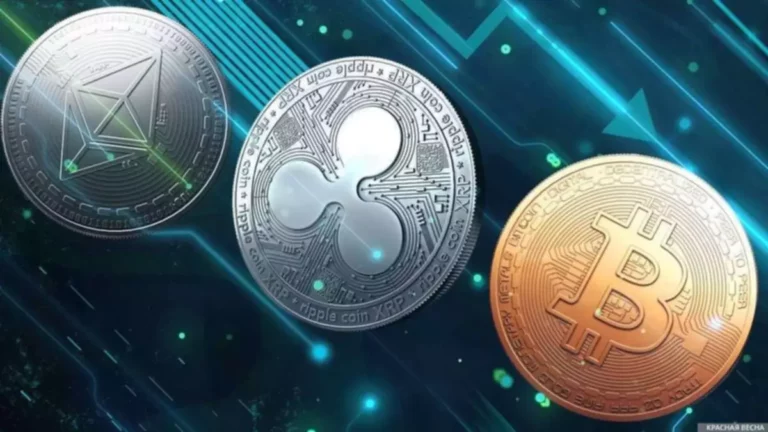Getting Started with NET Aspire for Production Ready Cloud Native Apps
The code creates an IDistributedApplicationBuilder using DistributedApplication.CreateBuilder(), then adds a Redis container named “cache” using AddRedisContainer, storing the result in a variable named cache of type IResourceBuilder. It adds the ProjectName.ApiService project to the application model using AddProject, configuring service discovery and communication. Another AddProject call adds the ProjectName.Web project and multiple WithReference calls to pass the cache and apiservice variables. The app is then built and run using DistributedApplication.Run(), launching the app and its dependencies. Cloud-native applications often need to connect to diverse services, including databases, storage and caching solutions, messaging providers, and other web services.
- Similarly, The service defaults project provides an extension method called AddServiceDefaults on the IHostApplicationBuilder type.
- The code creates an IDistributedApplicationBuilder using DistributedApplication.CreateBuilder(), then adds a Redis container named “cache” using AddRedisContainer, storing the result in a variable named cache of type IResourceBuilder.
- Overall, this version focuses on simplifying development, improving performance, and enhancing the overall experience of building web APIs.
- It adds the ProjectName.ApiService project to the application model using AddProject, configuring service discovery and communication.
- Unlike some older frameworks, .NET Core is designed to solve today’s modern needs, including being mobile friendly, build once run everywhere, scalable, and high performance.
- Also, Primitive types now implement a new formattable and parsable interface, enabling them to directly format and parse as UTF-8 without any transcoding overhead.
RESTful Web APIs are designed to work on top of the existing HTTP protocol, leveraging its methods, status codes, and headers for communication. They use a stateless client-server communication model, where the server does not maintain any client state between requests. Instead, each request from the client contains all the necessary information for the server to understand and process it.
It simplifies the development process, allowing developers to focus on their core business logic. Packaged as a set of NuGet packages, .NET Aspire handles specific cloud-related concerns. Whether you’re dealing with databases, messaging, or caching, .NET Aspire has you covered. It’s your go-to stack for creating cloud-ready, observable, and production-ready applications. Microservices are a new design pattern that allows developers to build small modules of software services that can communicate with each other using well-defined contracts. Microservices make it easier to develop, test, and deploy isolated parts of your application.
Recommended experience
This module is designed to provide learners with a comprehensive understanding of how to develop and configure web applications using the ASP.NET Core framework. By the end of the module, learners will be proficient in building and configuring web applications using ASP.NET Core. They will be able to apply best practices and design patterns to build high-quality applications that meet the needs of their clients and users.
These are just a few highlights of the new features and improvements in ASP.NET Core Web API 6.0. Overall, this version focuses on simplifying development, improving performance, and enhancing the overall experience of building web APIs. It provides developers with a powerful framework to create robust and scalable APIs for their applications. Windows Forms, WPF, UWP, and Xamarin are four major frameworks for building desktop applications. “With this release, .NET reshapes the way we build intelligent, cloud-native, applications and high-traffic services that scale on demand,” Microsoft said Tuesday as its .NET Conf 2023 event kicked off. “Whether you’re deploying to Linux or Windows, using containers or a cloud app model of your choice, .NET 8 makes building these apps easier.”
.NET Coding Pack for students
In addition, the .NET Core can be deployed in Docker containers. The first version, .NET Core 1.0, was released in 2016 with limited functionality. Two key frameworks released in this release were ASP.NET Core 2.0 and Entity Framework Core 2.0. The next stable versions, .NET Core 2.1 and 2.2, were released in May and Dec 2018. The current version of .NET Core is 3.0.0, in Preview 3, and was announced on March 6, 2019.
On the other hand, the ProjectName.ApiService project follows the standard ASP.NET Core Minimal API template structure. Both projects rely on the shared ProjectName.ServiceDefaults project, which centrally manages configurations reused across various projects in your solution. To help you set up quickly, you can install the .NET Coding Pack, which includes VS Code, the .NET Software Development Kit, and essential .NET extensions. The Coding Pack can be used as a clean installation, or to update or repair an existing development environment. C# and UWP are used to build mobile, desktop, console, TV, VR, AR, and Web games.
See how employees at top companies are mastering in-demand skills
ASP.NET Core is based on MVC architecture and provides common libraries to build the Web. The same API or library can be used with multiple platforms in multiple languages. There are no specific prerequisites for this course, although a basic understanding of web development concepts could be beneficial. It is designed to accommodate learners from all levels of experience.
A Web API, also known as a web service, is an interface that allows communication and data exchange between different software systems over the web. It provides a set of endpoints or URLs that clients can send HTTP requests to, and receive HTTP responses containing the requested data or perform certain operations. The ProjectName.Web project is a conventional ASP.NET Core Blazor App that delivers the frontend user interface.
It can be used to build a wide range of applications, including web applications, desktop applications, and microservices. Whether it’s handling service defaults, incorporating Redis for output caching, or configuring HttpClient for seamless communication between projects, .NET Aspire streamlines the development process. “.NET MAUI provides you a single project system and single codebase to build WinUI, Mac Catalyst, iOS, and Android applications,” Microsoft said. Despite these advantages, designing a cloud-native application can be a complex and time-consuming task, requiring careful consideration of various factors. Developers often find themselves grappling with decisions about technologies, tools, stacks, and cloud services, leading to confusion and challenges in building future-proof cloud solutions.
UWP can be used to build apps that run on IoT powered by Raspberry Pi, MinnowBoard MAX, DragonBoard 410c, and others. TypeScript is one of the key components of the .NET Core and Visual Studio ecosystem. According to a report published by TechEmpowers, .NET Core is much faster than any other framework.
By following these principles, RESTful Web APIs provides a standard and scalable approach to designing and developing web services. They promote loose coupling between clients and servers, enabling easy integration with various platforms and technologies. RESTful APIs are widely used in web and mobile application development, enabling clients to interact with server resources in a flexible and efficient manner. ASP.NET Core Web API is a framework for building scalable and high-performance web services using the ASP.NET Core platform. It allows developers to create robust and flexible APIs that can be consumed by a variety of clients, such as web applications, mobile apps, and third-party services. The company dubbed it the “evolution” of Xamarin.Forms because it added desktop support to provide a unified development experience across Android, iOS, macOS and Windows, helping developers reach a wider audience.
REST (Representational State Transfer) is an architectural style for designing networked applications. It provides a set of principles and constraints for building scalable and interoperable web services. RESTful Web APIs are APIs that adhere to the principles of REST.
The first module lays the foundation of .NET Core, discussing its history, features, differences from other technologies, and how to set up the development environment. Lessons include an introduction to .NET Core, its architecture, and how to utilize .NET CLI for development. The second module offers a deep dive into ASP.NET Core, focusing on developing and configuring web applications. Learners will master the MVC pattern, https://www.globalcloudteam.com/ routing, action methods, and views, along with detailed insights into configuring and deploying applications in various hosting environments. The third module takes the understanding further, delving into advanced concepts, including dependency injections, middlewares, and crucial aspects related to configuration, debugging, and testing. It provides hands-on experience in building a .NET Core application from scratch.
By the end of this course, you will have a foundational to advanced understanding of .NET Core, capable of creating dynamic, responsive web applications that run on any platform. The course’s comprehensive coverage ensures that learners are proficient in both theoretical concepts and practical application, making them ready for real-world development. It is designed to run on various platforms, including Windows, macOS, and Linux.



